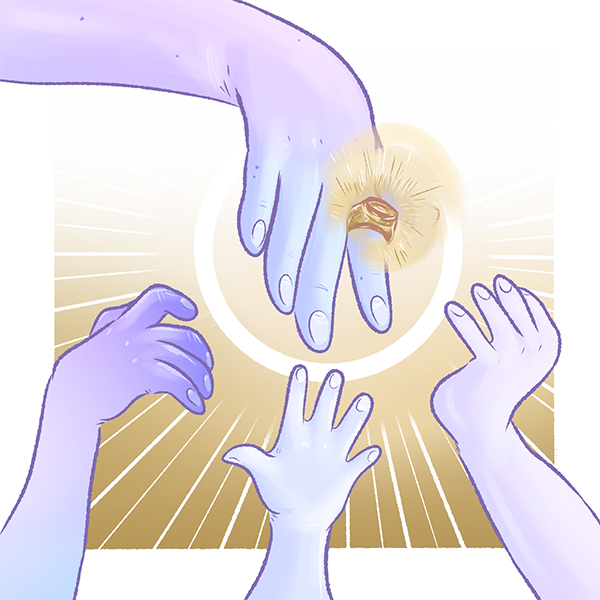As a first-generation student, chemistry junior Nicole Kim wanted to take part in the celebratory ring ceremony tradition. What she didn’t know was that it would end up costing her hundreds of dollars in unanticipated expenses and a ring upgrade she wasn’t looking for.
Upon completing 75 hours of coursework, it is a time-honored tradition for students to reward themselves with a shiny keepsake to commemorate their time at UT. However, this tradition often comes with a financial burden.
“On the website there’s an option called ‘Metal Type,’” Kim said. “You have to choose a type or you can’t check out. The cheapest metal type offered is $670.00 10 (karat) gold. I was confused because I thought that the base price for rings was $450.00, not almost $700.”
After inquiring with a Balfour representative about the possibility of a cheaper option, Kim learned that 10 karat gold is the minimum-cost option that UT offers for students to purchase.
“I feel like when I saw the $450 (ring cost), I could kind of justify it in my mind a little bit,” Kim said. “But that $670 hit me hard.”
Texas Exes, the UT alumni group that oversees continuing the tradition of selling class rings, regarded the minimum metal requirement as a question of quality rather than cost.
“Because of its longevity, quality and durability, the official University of Texas class ring is offered in 10 (karat), 14 (karat), or 18 (karat) gold,” vice president of engagement Courtney Roehling said.
According to Texas Exes vice president of communications Dorothy Guerrero, there are other options available for students to purchase a ring when they are able to financially.
“We understand that purchasing a ring isn’t financially feasible for everyone,” Guerrero said. “Beyond the payment plan, we want students to know that once you earn 75 credit hours, you will always be eligible to participate in the tradition. We have many alumni who have waited until they were further along in their careers to purchase a ring, and they join in the celebration when they do. You can always have your ring dedicated in the Tower the year that you purchase.”
Using PayPal Credit, a third-party payment option, Kim was able to purchase her upgraded ring. Although Balfour offers one payment plan, it is split up into three months and Kim did not find it practical for her situation.
“I have a PayPal Credit account which gives me six months to pay off my bill and it’s a lot easier that way,” Kim said. “If the ring was originally $450 like I thought it would be, I think I would’ve been more open to using the Balfour three monthly payments.”
Roxanne Springman, an arts and entertainment technologies junior, said providing cheaper ring alternatives could help students like her and Kim participate in the school tradition.
“I knew I wanted a ring, however, I didn’t expect it to be over a half grand,” Springman said. “The pricing of the ring restricts it to only the wealthier class of UT students and causes many to miss out on that feeling of accomplishment.”
Springman also said altering the payment plans could make a difference in students’ ability to purchase a ring.
“Having longer payment plans and ring options would absolutely motivate me to buy a ring right now,” Springman said. “I simply cannot pay off a ring in three months.”
Kim proposed that UT should consider allowing more financially feasible options for students.
“If UT were open to including the cheaper metals that Balfour offers to allow the rings to be more affordable, I’m sure more people would buy,” Kim said.





















